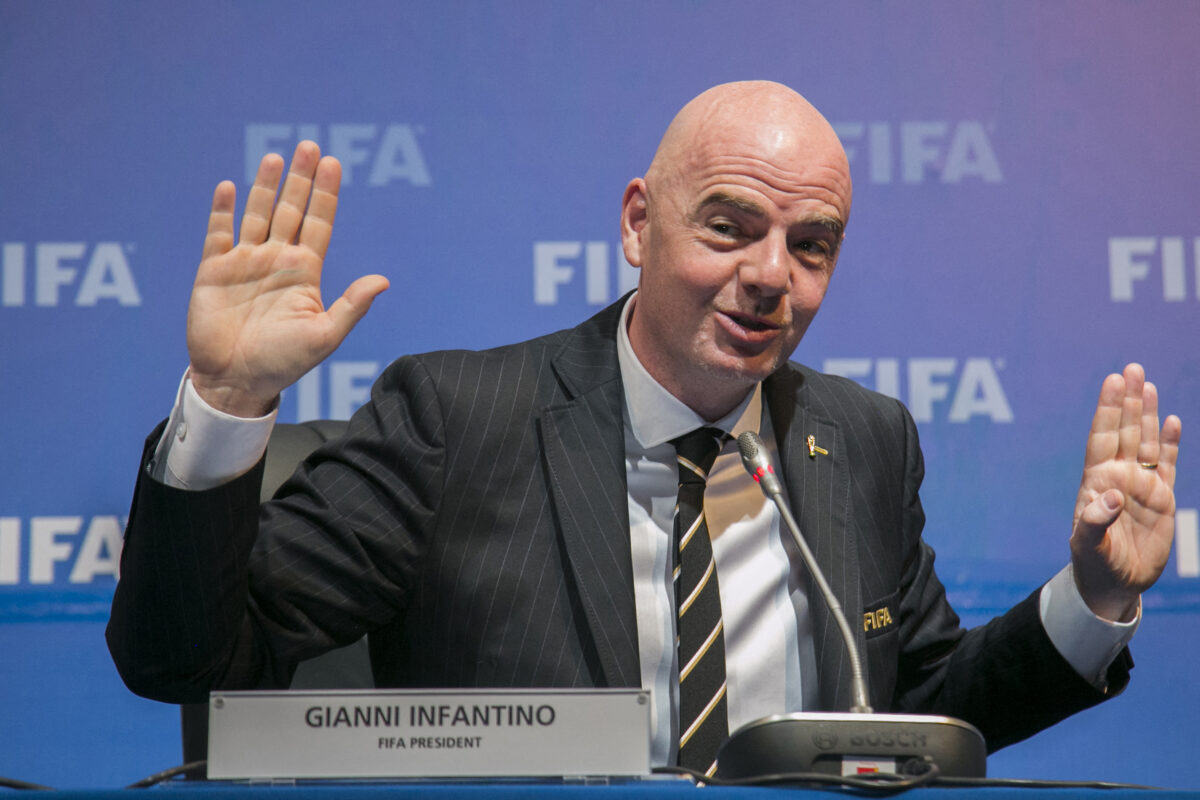FIFA has decided to retain four-team groups at the 2026 World Cup.
The FIFA council held votes on several major issues in Kigali, Rwanda, ahead of the 73rd FIFA Congress that begins on Thursday. Most notable among those decisions was a unanimous choice to maintain the group sizes at the men’s World Cup despite the tournament’s expansion.
FIFA has opted to let 48 teams contest the 2026 World Cup, easily the largest version of the tournament ever held. However, that expansion comes with some logistical problems: how do you winnow down the initial 48 to a number that is consistent with the knockout round format? The old approach, involving groups of four where the top two sides advance, would see 24 teams going through. There’s no path to a normal final that avoids an awkward fit somewhere along the way.
It had been largely expected that FIFA’s solution would be to shrink the groups themselves, with 16 three-team groups each sending two teams to a 32-team knockout round. That would allow for FIFA to keep the World Cup’s footprint on the calendar from growing despite the addition of 16 more teams.
That would be a departure from the four-team format that had held since the 1954 World Cup. After a bizarre experiment at that tournament saw teams play only two of their three group foes, FIFA instituted a more logical round-robin approach to each group in 1958 that has been in place ever since.
However, after the extraordinary drama in so many of the groups at November’s World Cup, FIFA had reason to reconsider. Three-team groups would conclude with one team in the stands or watching on TV; the thrills of following scores in two separate games being played simultaneously would be lost. The gripping spectacle that FIFA was so happy to have in the 2022 World Cup simply wouldn’t be possible.
On top of that, the schedule would be impossible to balance. For example, a team advancing to the knockout round while not having to play the final game in the group would have a major advantage in terms of rest days over an opponent who didn’t have that luxury.
As such, FIFA announced Tuesday that they’d follow a different course after what it called “a thorough review that considered sporting integrity, player welfare, team travel, commercial and sporting attractiveness, as well as team and fan experience.” FIFA added that “the revised format mitigates the risk of collusion and ensures that all the teams play a minimum of three matches, while providing balanced rest time between competing teams.”
The new version of the tournament will feature a whopping 104 total games, up from the 64 games needed to determine a winner in a 32-team World Cup.
How will the 2026 World Cup group stage work?
Unfortunately for FIFA, there’s no getting around the fact that a 48-team tournament will require an awkward choice somewhere along the lines.
FIFA’s choice is to return to a method used back when the tournament only had 24 teams: the top two sides in every group will go through, along with the eight best third-placed teams. Back in the day, that used to produce a 16-team knockout round comprised of six group winners, six runners-up, and the four best third-place sides.
In 2026, those numbers will all double: 12 group winners, 12 runners-up, and eight third-place sides will go into a 32-team knockout round.
Obviously that creates something of an imbalance. Most group winners will be paired with a third-place finisher, which implies an easier path forward. Four group winners will end up against a runner-up, though, and in all likelihood that will come down to the luck of the draw.
[lawrence-related id=15043,14705,14072]
